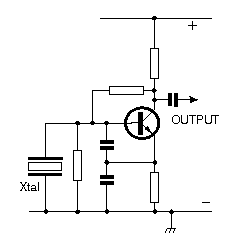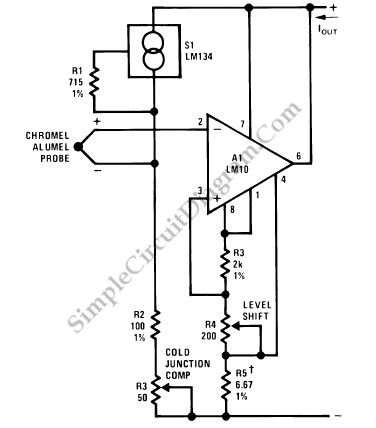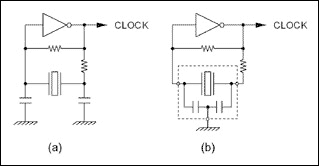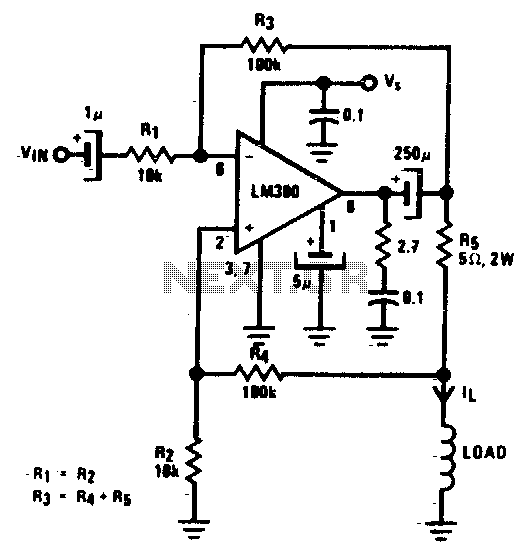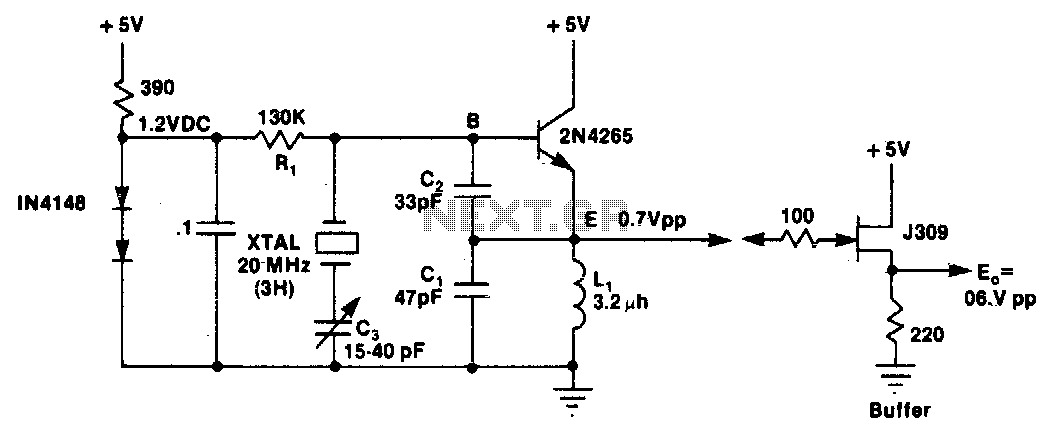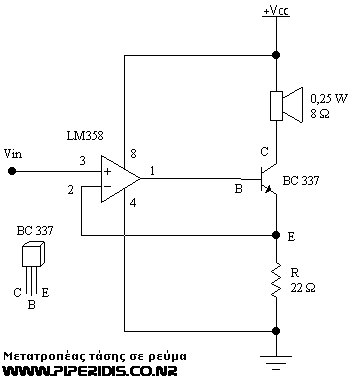
current controlled oscillator
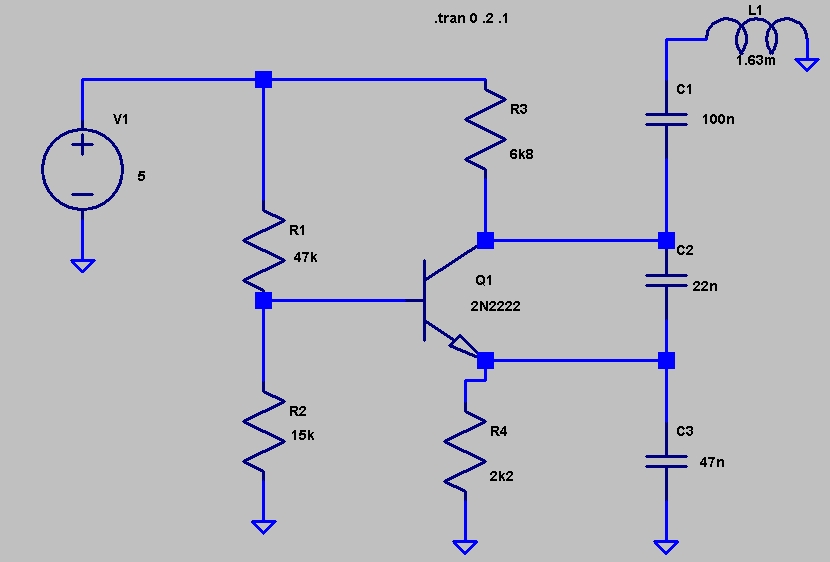
This circuit was featured in the "design ideas" section of EDN's March 5, 2007 issue. It is a relatively simple circuit that allows investigation into how the inductance of a toroid (or any core) is affected by saturation, which occurs when a current is applied to a secondary winding. The oscillator frequency in this circuit is a function of the controlling current, enabling current measurement without a direct ohmic connection to the circuit. Initially, 16 turns were used on an FT37-43 toroid to achieve approximately 100 µH, but oscillation did not occur until the supply voltage was increased from 5V to about 12V, with the application of the measurement current halting oscillation. The frequency reached over 150 kHz. A new coil was created using a slightly larger FT37-43 toroid with over 50 turns to yield 1.63 mH, with four turns wound onto the toroid for the measurement winding. The frequency varied (increased) after each adjustment, likely due to a time constant or changing current below the 0.4 A-t level (100 mA on the meter times four turns). The supply voltage was 5.07 VDC, and higher supply voltages appeared to enhance performance. The article suggested that this technique may not provide sufficient repeatability for accurate current measurements, which is likely true. However, it is suitable for order-of-magnitude measurements or overcurrent detection. Additionally, it could be implemented in a feedback loop (PLL) to control frequency using current and inductance instead of the traditional varactor method. This measurement could also help infer changes in inductance (and permeability) with current. In this example, 4 ampere-turns approximately doubled the frequency, indicating that the inductance was reduced by a factor of four.
The circuit operates by utilizing the principle of inductive saturation, where the inductance of the toroidal core decreases as the magnetic field strength increases due to the applied current. The oscillator circuit can be designed using a feedback configuration that incorporates the inductance of the toroid, allowing the frequency to vary in response to changes in the controlling current.
The oscillator can be constructed using a basic feedback oscillator topology, such as a Colpitts or Hartley oscillator, where the inductance of the toroid is a key component in determining the oscillation frequency. The frequency of oscillation (f) can be expressed as:
f = 1 / (2π√(L * C))
where L is the inductance and C is the capacitance in the circuit. As the current through the secondary winding increases, the inductance L decreases due to saturation effects, resulting in a higher frequency output.
The choice of the toroid core material and geometry is critical for achieving the desired inductance values and saturation characteristics. The FT37-43 core is a ferrite material that offers a good balance of inductance and saturation properties for this application.
In practical implementation, the circuit should include a method for measuring the output frequency, such as a frequency counter or an oscilloscope, to monitor the changes in frequency corresponding to the applied current. The use of a variable power supply can facilitate experimentation with different supply voltages to optimize circuit performance.
Overall, this circuit presents a valuable tool for exploring the behavior of inductors under varying current conditions and can serve applications in current sensing, feedback control systems, and educational demonstrations on magnetic saturation phenomena.This circuit was in EDN`s "design ideas" section in the March 5, 2007 issue. It`s a fairly simple circuit and an easy way to investigate how the inductance of a toroid (or any core) is changed by saturation, which in this case is caused by applying a current to a secondary winding. With this circuit, the oscillator frequency is a function of the co ntrolling current and so it can be used to measure current without direct ohmic connection to the circuit. I originally used 16 turns on an FT37-43 toroid for about 100uH, but it wouldn`t oscillate until I increased supply voltage from 5 to about 12 volts, and applying the measurement current would stop oscillation.
The frequency was over 150kHz. I did a new coil using a slightly larger FT37-43 with 50+ turns to give 1. 63mH. I wound four turns onto the toroid for the measurement winding. Frequency would move around (rise) after each adjustment, either due to some time constant or because current was changing below the 0. 4 A-t level. (100mA on the meter times four turns. ) Supply voltage was 5. 07 VDC. In some cases it seems to do better with higher supply voltage. The article hinted that this technique wouldn`t be repeatable enough for an accurate current measurement technique.
That`s probably true. For order-of-magnitude measurements or detection of overcurrent, it would be fine. It could also be used in a feedback loop (PLL) to control frequency using current and inductance as opposed to the traditional varactor method. This measurement could also be used to infer the inductance (and permeability) changes with current. In my example, 4 ampere-turns approximately doubled the frequency. Since frequency is proportional to the square root of inductance, the inductance was reduced by a factor of four (4).
🔗 External reference
The circuit operates by utilizing the principle of inductive saturation, where the inductance of the toroidal core decreases as the magnetic field strength increases due to the applied current. The oscillator circuit can be designed using a feedback configuration that incorporates the inductance of the toroid, allowing the frequency to vary in response to changes in the controlling current.
The oscillator can be constructed using a basic feedback oscillator topology, such as a Colpitts or Hartley oscillator, where the inductance of the toroid is a key component in determining the oscillation frequency. The frequency of oscillation (f) can be expressed as:
f = 1 / (2π√(L * C))
where L is the inductance and C is the capacitance in the circuit. As the current through the secondary winding increases, the inductance L decreases due to saturation effects, resulting in a higher frequency output.
The choice of the toroid core material and geometry is critical for achieving the desired inductance values and saturation characteristics. The FT37-43 core is a ferrite material that offers a good balance of inductance and saturation properties for this application.
In practical implementation, the circuit should include a method for measuring the output frequency, such as a frequency counter or an oscilloscope, to monitor the changes in frequency corresponding to the applied current. The use of a variable power supply can facilitate experimentation with different supply voltages to optimize circuit performance.
Overall, this circuit presents a valuable tool for exploring the behavior of inductors under varying current conditions and can serve applications in current sensing, feedback control systems, and educational demonstrations on magnetic saturation phenomena.This circuit was in EDN`s "design ideas" section in the March 5, 2007 issue. It`s a fairly simple circuit and an easy way to investigate how the inductance of a toroid (or any core) is changed by saturation, which in this case is caused by applying a current to a secondary winding. With this circuit, the oscillator frequency is a function of the co ntrolling current and so it can be used to measure current without direct ohmic connection to the circuit. I originally used 16 turns on an FT37-43 toroid for about 100uH, but it wouldn`t oscillate until I increased supply voltage from 5 to about 12 volts, and applying the measurement current would stop oscillation.
The frequency was over 150kHz. I did a new coil using a slightly larger FT37-43 with 50+ turns to give 1. 63mH. I wound four turns onto the toroid for the measurement winding. Frequency would move around (rise) after each adjustment, either due to some time constant or because current was changing below the 0. 4 A-t level. (100mA on the meter times four turns. ) Supply voltage was 5. 07 VDC. In some cases it seems to do better with higher supply voltage. The article hinted that this technique wouldn`t be repeatable enough for an accurate current measurement technique.
That`s probably true. For order-of-magnitude measurements or detection of overcurrent, it would be fine. It could also be used in a feedback loop (PLL) to control frequency using current and inductance as opposed to the traditional varactor method. This measurement could also be used to infer the inductance (and permeability) changes with current. In my example, 4 ampere-turns approximately doubled the frequency. Since frequency is proportional to the square root of inductance, the inductance was reduced by a factor of four (4).
🔗 External reference
